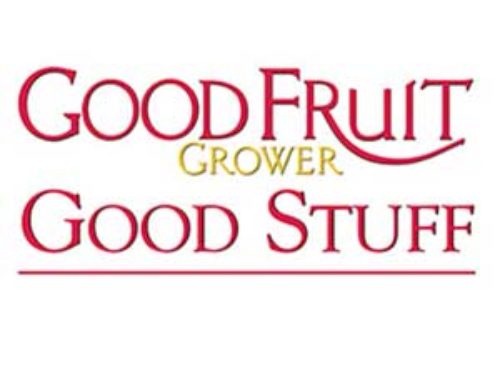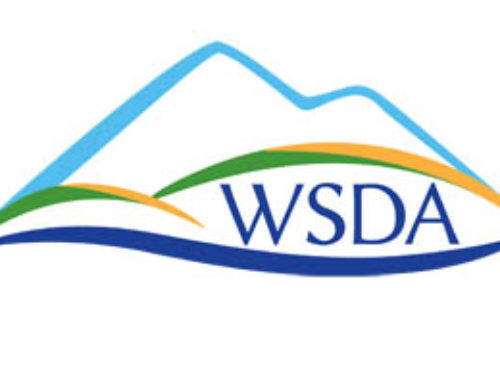
U.S. apple growers will have their hands full in the near future. They need to sell a crop that is getting bigger fast, but for which domestic consumption isn’t growing. And while consumption is growing in developing countries where incomes are expanding, the race to access those consumers is being won by competitors.
That assessment came from Dr. Desmond O’Rourke, who presented his views in a web seminar hosted by Northwest Farm Credit Services on May 29.
O’Rourke says that for American growers to have a prosperous future, a team effort is required, and an important player is the federal government. “The U.S. government has done a lousy job of keeping trade -avenues open,” he said.
And on the cost side, the government has added laws and regulations. “The Food Safety Modernization Act will add costs and more record keeping without providing much benefit to the apple industry,” he said.
A successful team needs the following: “savvy -marketers” who take the pulse of the market, know what consumers want, and communicate it back through the production chain; packers who respond to these market signals with quality apples in the right kinds of packs and at the right time; and growers who are oriented to quality and production efficiency.
Growing supply
O’Rourke started his presentation on the supply side, noting that Washington State seems headed toward producing a much larger annual crop of 140 million to 145 million packed boxes, and perhaps more. Yields are rising as well as acreage, and if club apple varieties perform, limits on their production may be increased by members of the clubs.
While smaller than Washington State, New York, Michigan, and California are significant production areas that are getting larger, and production is growing in the more minor producing states as well. “These states, which were producing mainly for processing, are swinging toward the fresh market, so there will be a lot more fresh apples available,” -O’Rourke said.
World apple production was around 65 million metric tons last year, with China producing about 38 million of that. China is heading toward an annual production of about 50 million metric tons.
“They are planting,” O’Rourke said, adding that other countries are as well. World annual production could hit 100 million metric tons by 2025, he said. Production is growing in Turkey, Poland, India, Iran, Chile, Argentina, Ukraine, South Africa, and Brazil.
The largest exporters of apples in 2009 were China, the United States, Turkey, Poland, Italy, Iran, and India.
One of the limits facing Chinese producers has been their inability to find good alternative varieties to Fuji, -O’Rourke said.
Demand side
U.S. growers face a dilemma. In the domestic -market, where people have money to spend, growers need to produce new varieties to provide a novel -experience to induce consumers to buy more apples. Apple -consumption is stagnant in richer countries, he said.
In the developing countries, however, apples are -considered a treat, and rising incomes do lead -consumers to eat more apples, and they need not be new varieties.
Ideally, U.S. producers could serve both markets. The American market poses its challenges and risks, as -growers need to provide both familiar and novelty products.
They also face activist nongovernmental organizations that are often critical of agriculture and skilled in public relations. It doesn’t help apple growers that their product tops the annual Dirty Dozen List compiled by the Environmental Working Group. Various activist groups worry about local production, carbon footprints, social responsibility, and sustainability, etc.
In other countries, U.S. growers face mounting problems of access, and the U.S. government has been increasingly less successful in tearing down barriers to free trade. American growers need to export apples, O’Rourke emphasizes.
He says the era of the Pax Americana is ending. In the 20 years after World War II, the United States was the dominant industrialized country and was able to set the world trade agenda and, through force of arms, assure the free flow of goods around the world.
As industrial power recovered in Europe and Japan, these nations generally backed U.S. policies and goals. But since the 1970s, the group of industrialized nations has grown to about 20 major economies, and many of them do not support U.S. goals.
Since 1995, there has been very little progress on freeing up world trade, and he sees no major breakthroughs. Moreover, the U.S. has been slow to adopt bilateral trade agreements. Other countries do seek to forge trade agreements with selected trading partners, while U.S. policy has been focused broadly on free trade and the World Trade Organization.
“Many of our apple growers’ major competitors are able to produce high quality fruit and they are eyeing the same export markets,” O’Rourke said. Those are the markets in the developing countries where rising incomes generate more apple sales.
What needs to happen
The U.S. government must do more to promote free trade, O’Rourke said. Two “mega-deals” are under negotiation but have been slow to mature. They are the Trans-Pacific Partnership and the Transatlantic Trade and Investment Partnership.
The Trans-Pacific Partnership would enhance trade and investment among partner countries. Originally, the plan was developed in 2005 among Chile, New Zealand, and Singapore, quickly joined by Brunei. The United States asked to join in 2008, and since then seven other countries have entered the negotiations and several more have expressed interest in joining.
The negotiations have been stalled by some U.S. Senate Democrats, -O’Rourke said, and President Obama is “lukewarm,” he said.
The Transatlantic Trade and Investment Partnership would link the United States and the European Union. The chief benefit to U.S. agriculture would occur if the conflicts on food safety issues could be resolved. But there are many sources of conflict there, some of which have virtually shut down apple exports to the European Union.
Marketers are the link between retailers and the production side of the apple industry. They need to respond to retailer demands and send the message to packers.
O’Rourke thinks they need to combine forces to better serve retailers’ needs for year-round supplies of products and also be proactive, sending signals from growers to retailers.
“Washington marketers are not spending enough to promote demand,” he said.
Packers, who turn raw apples into desirable products and packs, should be communicating both to marketers and to growers.
Growers need to drive down their unit costs of production, produce desirable varieties in their best grades and sizes, and have the best packing and marketing partners they can find.
They need to do the best job they can of producing the established varieties, but continue to try to find new ones that they can grow well. “New varieties are a costly gamble,” he said, “but growers should be testing one or two at all times.”
Growers wanting to watch O’Rourke’s 45-minute -presentation can find it at www.northwestFCS.com.
O’Rourke is considered the foremost economist focusing on the fruit industry. He spent the major part of his career—30 years—as an agricultural economist at Washington State University. In 2000, he retired and started Belrose, Inc., in Pullman, Washington.
He keeps track of economic conditions in the fruit business around the world, with his most important outreach being the monthly World Apple Report. More about it can be found at www.e-belrose.com. •






Leave A Comment